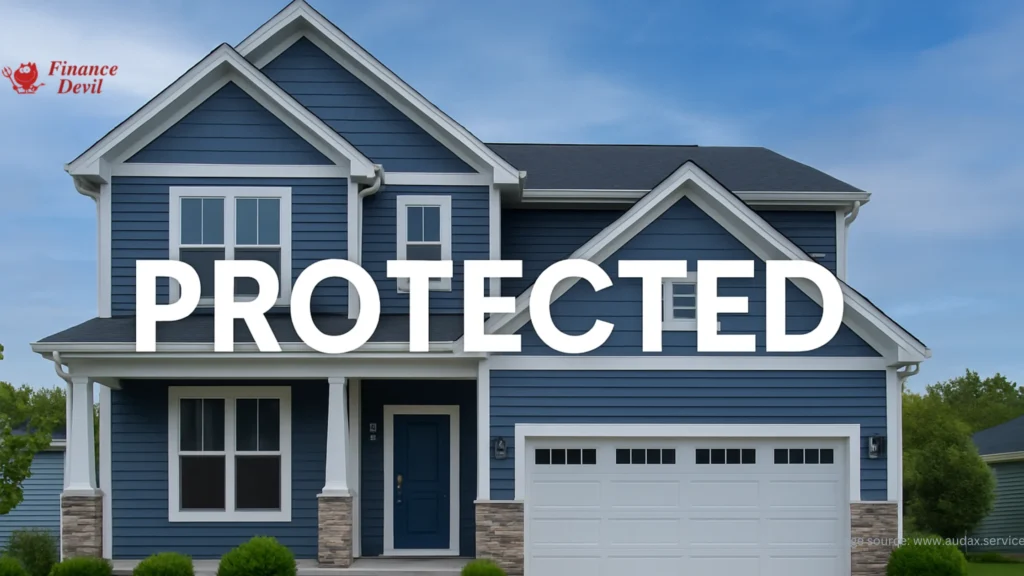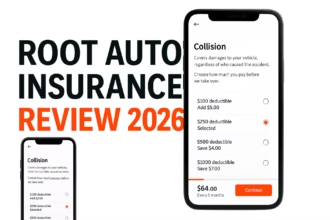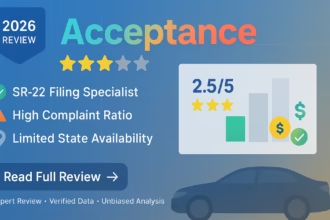Introduction

Over 85% of American homeowners are underinsured, yet many don’t fully understand what their homeowners insurance actually covers. With the average home insurance claim reaching $12,514 in 2024, knowing your coverage inside and out could save you thousands when disaster strikes.
Whether you’re a first-time homebuyer or reviewing your existing policy, understanding what homeowners insurance covers, and equally important, what it doesn’t, is crucial for protecting your most valuable asset.
Why Homeowners Insurance Coverage Is More Critical Than Ever
The modern homeowner faces unprecedented risks. Climate change has intensified weather patterns, with property losses from severe weather reaching $99 billion in 2023 alone. Meanwhile, construction costs have surged 30% since 2020, making proper dwelling coverage more critical than ever.
The harsh reality: Standard homeowners policies haven’t kept pace with these evolving risks. Many homeowners discover coverage gaps only after filing a claim, when it’s too late to make adjustments.
What Does Homeowners Insurance Cover? The Six Core Coverage Types
1. Dwelling Coverage (Coverage A) – Your Home’s Foundation Protection
Dwelling coverage is the cornerstone of your homeowners policy, protecting the physical structure of your home. This includes:
- Main structure: Walls, roof, floors, built-in appliances
- Attached structures: Decks, porches, attached garages
- Built-in systems: Plumbing, electrical, HVAC systems
Key insight: Most policies provide “replacement cost” coverage, meaning they’ll pay to rebuild your home with materials of “like kind and quality,” regardless of depreciation.
Coverage amount: Should equal the cost to completely rebuild your home (not its market value). The Insurance Information Institute recommends reviewing this annually, as construction costs fluctuate significantly.
2. Other Structures Coverage (Coverage B) – Beyond Your Main Home
This coverage protects detached structures on your property:
- Detached garages and workshops
- Fences and retaining walls
- Gazebos and pergolas
- Storage sheds and barns
Standard limit: Typically 10% of your dwelling coverage. If you have a $300,000 dwelling limit, you’d have $30,000 for other structures.
3. Personal Property Coverage (Coverage C) – Your Belongings Matter
Personal property coverage protects your possessions anywhere in the world, including:
- Furniture and electronics
- Clothing and jewelry (with limits)
- Appliances and tools
- Items temporarily away from home
Coverage approaches:
- Actual Cash Value (ACV): Pays depreciated value
- Replacement Cost: Pays to replace with new items (recommended upgrade)
Standard limit: 50-70% of dwelling coverage
Important note: High-value items like jewelry, art, and collectibles have sublimits (usually $1,000-$2,500). Consider scheduled personal property endorsements for expensive items.
4. Loss of Use Coverage (Coverage D) – When Home Isn’t Livable
Also called Additional Living Expenses (ALE), this coverage pays for:
- Hotel or rental housing costs
- Restaurant meals (when you can’t cook)
- Laundry and other additional expenses
- Pet boarding fees
Real-world example: After a kitchen fire, the Johnson family’s loss of use coverage paid $4,200 monthly for temporary housing during six months of repairs.
Standard limit: 20-30% of dwelling coverage
5. Personal Liability Coverage (Coverage E) – Legal Protection
Liability coverage protects you from lawsuits and medical bills if you’re found responsible for:
- Injuries to visitors on your property
- Damage you cause to others’ property
- Incidents involving your pets
- Accidents you cause away from home
Standard limits: $100,000-$500,000, though many experts recommend at least $300,000
Consider umbrella insurance if your assets exceed your liability limits.
6. Medical Payments Coverage (Coverage F) – No-Fault Protection
This coverage pays medical expenses for visitors injured on your property, regardless of fault:
- Ambulance fees
- Emergency room visits
- Basic medical treatment
Standard limit: $1,000-$5,000
What Homeowners Insurance Covers: Covered Perils and Events
Commonly Covered Perils Include:
- Fire and lightning damage
- Windstorm and hail
- Theft and vandalism
- Water damage from burst pipes or appliance malfunctions
- Weight of ice, snow, or sleet
- Falling objects (like tree branches)
- Sudden electrical damage from power surges
HO-3 vs. Other Policy Types: Coverage Differences
HO-3 (Most Popular – 80% of policies):
- Dwelling: “Open perils” – covers everything except exclusions
- Personal property: “Named perils” – covers only listed events
HO-5 (Comprehensive):
- Both dwelling and personal property: “Open perils” coverage
- Most expensive but offers broadest protection
HO-1 and HO-2 (Basic):
- Both coverages: “Named perils” only
- Limited coverage, rarely recommended
What Homeowners Insurance Doesn’t Cover: Critical Exclusions
Natural Disasters Requiring Separate Coverage
Flood Damage:
- Standard policies exclude flood damage
- Separate flood insurance required (available through NFIP)
- Sobering stat: Just one inch of water can cause $25,000 in damage
Earthquake Damage:
- Requires separate earthquake insurance
- Essential in high-risk areas like California
Hurricane/Windstorm (in some coastal areas):
- May require separate windstorm insurance
- Check state-specific requirements
Maintenance and Neglect Issues
Homeowners insurance won’t cover damage from:
- Routine wear and tear
- Deferred maintenance
- Pest infestations (termites, rodents)
- Mold (unless from covered water damage)
- Foundation settling
Hidden Coverage Gems: Lesser-Known Benefits in Your Policy
Most homeowners don’t realize their policy includes these valuable coverages:
| Coverage Type | What It Covers | Typical Limit |
| Debris Removal | Tree cleanup after storms | $1,000 per occurrence |
| Credit Card Fraud | Stolen credit/debit cards | $500 |
| Fire Department Service | Fire dept. response fees | $500 |
| Grave Markers | Cemetery damage | $5,000 |
| Loss Assessment | HOA special assessments | $1,000 |
How to Maximize Your Homeowners Insurance Coverage
1. Choose the Right Coverage Limits
Dwelling Coverage Calculation:
- Use replacement cost calculators
- Account for local construction costs
- Review annually for cost increases
Personal Property Assessment:
- Conduct home inventory
- Photograph valuable items
- Store documentation off-site
2. Consider Valuable Endorsements
Scheduled Personal Property:
- Covers specific high-value items
- No deductible applies
- Worldwide coverage
Water Backup Coverage:
- Covers sewer/drain backups
- Increasingly important as infrastructure ages
Equipment Breakdown:
- Covers mechanical/electrical failures
- Valuable for homes with expensive systems
3. Optimize Your Deductible Strategy
Higher Deductibles = Lower Premiums:
- $500 deductible vs. $2,500 can save 15-30%
- Ensure you can afford the deductible amount
- Consider separate hurricane/wind deductibles in applicable areas
Common Homeowners Insurance Mistakes to Avoid
1. Underinsuring Your Dwelling
The Problem: Many homeowners base coverage on purchase price, not rebuilding costs.
The Solution: Use professional replacement cost estimates, not market value.
2. Ignoring Policy Updates
The Problem: Life changes require coverage adjustments.
The Solution: Review coverage after renovations, major purchases, or life events.
3. Assuming All Water Damage Is Covered
The Problem: Different water sources have different coverage rules.
The Solution: Understand the difference between “water backup” and “flood” coverage.
4. Not Documenting Belongings
The Problem: Struggling to prove ownership/value during claims.
The Solution: Maintain a detailed home inventory with photos and receipts.
State-by-State Coverage Considerations
High-Risk States Requiring Special Attention:
Florida: Hurricane coverage complexities, Citizens Insurance considerations
California: Earthquake insurance necessity, wildfire coverage gaps
Texas: Hail damage frequency, wind/hurricane deductibles
Louisiana: Flood insurance critical, hurricane preparedness
Pro tip: Research your state’s insurance regulations and typical risks when selecting coverage.
The True Cost of Homeowners Insurance Coverage
2024 National Averages:
- National average: $2,110-$2,285 annually
- Range by state: $800 (Hawaii) to $4,000+ (Louisiana)
- Factors affecting cost: Location, home age, coverage limits, claims history
Ways to Reduce Premiums Without Sacrificing Coverage:
- Bundle with auto insurance (average 15% savings)
- Install safety features (smoke detectors, security systems)
- Maintain good credit (where legally allowed)
- Choose higher deductibles strategically
- Shop annually – rates change frequently
Expert Recommendations for 2025
Coverage Trends to Watch:
Climate Change Adaptations: More insurers are excluding certain weather-related damages
Technology Integration: Smart home discounts becoming standard
Inflation Guards: Automatic coverage increases to match construction costs
Professional Advice:
“Review your homeowners policy annually, like you would review investment portfolios. The risks and values change, and your coverage should adapt accordingly.” – Insurance Professional Association
When to Review and Update Your Coverage
Immediate Review Triggers:
- Home renovations or additions
- Major purchases (expensive jewelry, art, electronics)
- Changes in local construction costs
- Marriage, divorce, or family changes
- Starting a home-based business
Annual Review Checklist:
- Dwelling coverage adequacy
- Personal property limits
- Deductible optimization
- Available discounts
- New endorsements needed
READ ALSO: Types of Homeowners Insurance in 2025 (Save Thousands by Choosing Right)
Conclusion: Protect Your Investment with Proper Coverage
Understanding what homeowners insurance covers isn’t just about policy details; it’s about protecting your family’s financial future. With property values rising and climate risks increasing, having the right coverage has never been more critical.
Take action today: Insurance rates and availability change frequently. Whether you’re shopping for new coverage or reviewing your existing policy, compare multiple quotes to ensure you’re getting comprehensive protection at competitive rates.
Don’t wait for disaster to discover coverage gaps. Review your policy now, understand what’s covered and what’s not, and make informed decisions about additional protection you may need.
Ready to review your homeowners insurance coverage? Compare personalized quotes from top-rated insurers to ensure you’re properly protected at the best available rate.





